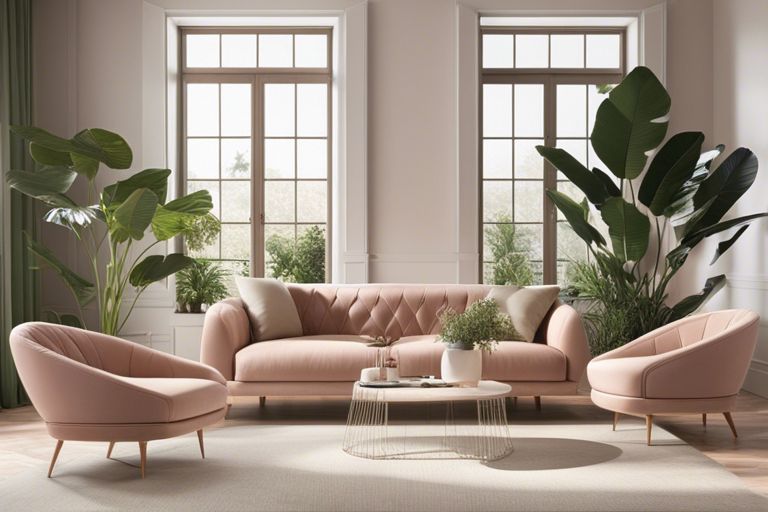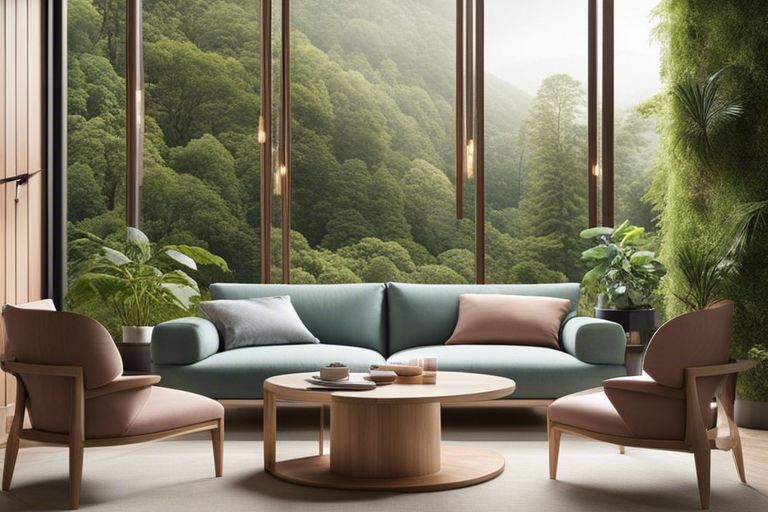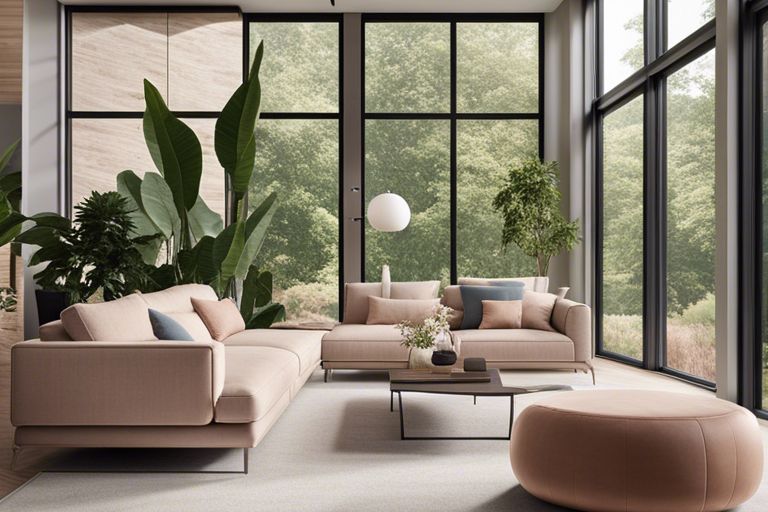Hey there! Have you ever wondered how buildings are designed to be sustainable and environmentally friendly? Well, I've got some exciting news for you! Architectural design software is a total game changer when it comes to creating sustainable and green buildings. It's like having a superpower that allows you to design structures that not only look amazing but also have a positive impact on the planet. In this blog post, I'm going to show you just how powerful this software can be and why it's such an important tool for architects and designers. So buckle up and get ready to dive into the world of architectural design software – it's going to blow your mind!
Quick Answer
Architectural design software has revolutionized sustainable and green design practices. With its advanced tools and features, you can easily incorporate energy-efficient elements and sustainable materials into your designs. This not only helps conserve resources but also contributes to a greener and more eco-friendly future.
How does architectural design software help achieve green design?
It is very helpful to utilize architectural design software in order to achieve green design for several reasons. Firstly, it allows you to accurately model and simulate various design options, helping you choose the most energy-efficient solutions. You can test different materials, orientations, and strategies for natural lighting and ventilation, ensuring maximum energy efficiency and reducing overall resource consumption. Secondly, the software incorporates sustainability metrics, allowing you to track and analyze the environmental impact of your design choices. This helps you identify areas for improvement and make informed decisions. Overall, architectural design software enhances the design process, enabling you to create eco-friendly buildings that minimize their carbon footprint while maximizing occupant comfort and well-being.
What are the most popular architectural design software programs?
In terms of the most popular architectural design software programs, they differ depending on the specific requirements of the user. However, some commonly used options include AutoCAD, SketchUp, Revit, and Rhino. AutoCAD is a versatile and widely used software for creating 2D and 3D designs. SketchUp is popular for its user-friendly interface and quick modeling capabilities. Revit is renowned for its comprehensive building information modeling (BIM) features. Rhino, on the other hand, is ideal for complex geometries and sculptural designs. Ultimately, it's important to consider your project requirements, your level of expertise, and the software's capabilities and compatibility with your workflow before making a decision.
How does architectural design software aid in sustainability?
In addition to assisting in sustainability, architectural design software allows you to create designs that are energy-efficient and environmentally-friendly. With these tools, you can visualize and analyze the performance of your building, such as calculating energy consumption, daylighting potential, and thermal efficiency. By incorporating elements like renewable energy systems, efficient insulation, and optimal use of natural light, you can minimize the building's environmental impact and reduce energy costs. The software also helps you simulate and test different design options, enabling you to make informed decisions to optimize sustainability. Ultimately, architectural design software empowers you to create more sustainable and eco-friendly buildings for a greener future.
How can architects use architectural design software to create more efficient designs?
One way architects can use architectural design software to create more efficient designs is by utilizing 3D modeling tools. With these tools, you can easily generate accurate and detailed 3D models of your designs, allowing you to visualize your ideas more effectively. This helps you identify any flaws or inefficiencies before beginning construction, saving time and resources. Additionally, design software often includes analysis features that allow you to predict and evaluate the thermal and energy performance of your designs. By taking advantage of these tools, you can make informed decisions that prioritize energy efficiency, sustainability, and optimize the overall performance of your architectural designs.
Designing for Sustainability | Energy Modelling made easy
Final Words
The question of how architectural design software has revolutionized sustainable and green design holds great significance for you as a final note. With the advancement of design technology, we are now more aware of how to design sustainable and environmentally friendly buildings. With the help of architectural software, we now have the ability to create energy-efficient buildings, use eco-friendly materials, and implement sustainable practices in our designs. This not only benefits the environment but also improves our quality of life. By using digital design tools, we can now create sustainable urban designs that promote healthier and more sustainable living spaces. So, if you're looking to improve your life and make a positive impact on the planet, exploring the world of architectural design software and its role in sustainable and green design is essential. Embrace this opportunity and join the movement towards a more sustainable future.
FAQ
FAQ: Architectural Design Software – A Game Changer In Sustainable And Green Design
1. What is architectural design software?
Architectural design software is computer software specifically designed for architects and designers to create, visualize, and analyze architectural designs. It allows professionals to develop precise and detailed models, generate realistic 3D visualizations, and evaluate various aspects of a project before construction.
2. How does architectural design software contribute to sustainable and green design?
Architectural design software plays a vital role in sustainable and green design by enabling architects to incorporate environmentally friendly features into their projects. This software provides tools for energy analysis, material optimization, and efficient space planning, helping architects reduce energy consumption, carbon footprint, and waste production.
3. How does architectural design software help optimize energy efficiency?
With architectural design software, architects can simulate how their designs will interact with their surroundings, such as the sun's position, wind patterns, and shading. By analyzing this data, architects can optimize the placement of windows, the orientation of the building, and the use of natural light to reduce energy consumption and maximize energy efficiency.
4. Can architectural design software assess the environmental impact of materials used in construction?
Yes, architectural design software often includes libraries of materials and their specific environmental attributes. This allows architects to evaluate the impact of different materials, such as their embodied energy, carbon emissions, and recyclability. By selecting materials with low environmental impact, architects can significantly contribute to sustainable design practices.
5. Can architectural design software help with water conservation?
Absolutely! Many architectural design software options include tools for water management and conservation. These tools allow architects to analyze water consumption patterns, optimize plumbing layouts, and implement efficient rainwater harvesting systems. By conserving water, architects can help preserve this valuable resource and reduce the burden on local water supplies.
6. Is architectural design software able to simulate the thermal performance of a building?
Yes, advanced architectural design software can simulate the thermal performance of a building, helping architects assess its energy efficiency and comfort levels. By analyzing factors like insulation, fenestration, and HVAC systems, architects can identify potential issues and make informed design decisions to enhance the building's thermal performance.
7. How can architectural design software enhance collaboration between professionals?
Architectural design software often supports collaboration through features like cloud-based sharing, real-time editing, and version control. These tools allow architects, engineers, and other professionals involved in a project to work together seamlessly, contributing their expertise and ensuring a holistic approach to sustainable design.
8. Are there any limitations to architectural design software?
While architectural design software has significantly revolutionized the industry, it does have limitations. It heavily relies on accurate input data and the expertise of the architect using it. Additionally, some software may require substantial hardware resources and can be costly to acquire and maintain.
9. What skills are necessary to effectively utilize architectural design software?
To effectively utilize architectural design software, architects should have a strong understanding of architectural principles and construction techniques. They should also possess basic computer skills and be willing to learn and adapt to new software tools. Additionally, a sound knowledge of sustainability principles and practices is essential to maximize the software's potential in green design.
10. Can architectural design software replace the role of architects?
No, architectural design software cannot replace the role of architects. While it enhances efficiency, visualization, and analysis, a human touch is still crucial in the creative and decision-making processes. Architects bring their expertise, design intuition, and problem-solving abilities, which cannot be replicated by software alone. Architectural design software is simply a tool that empowers architects to achieve sustainable and green design goals more effectively.


